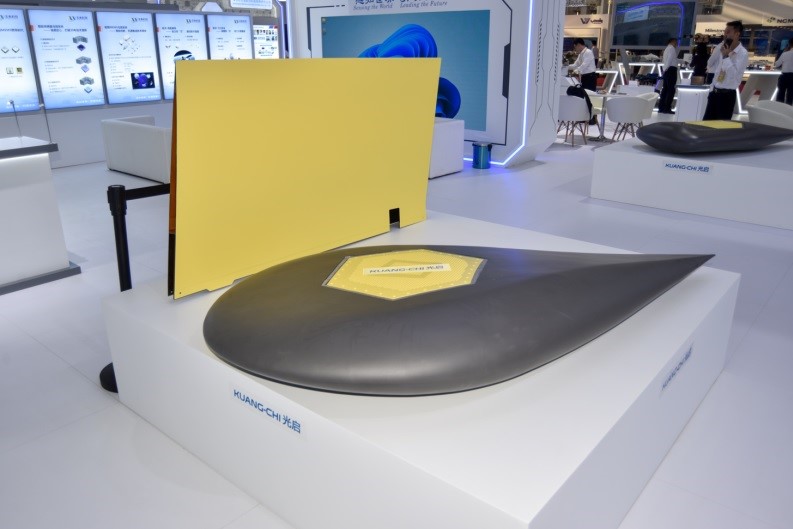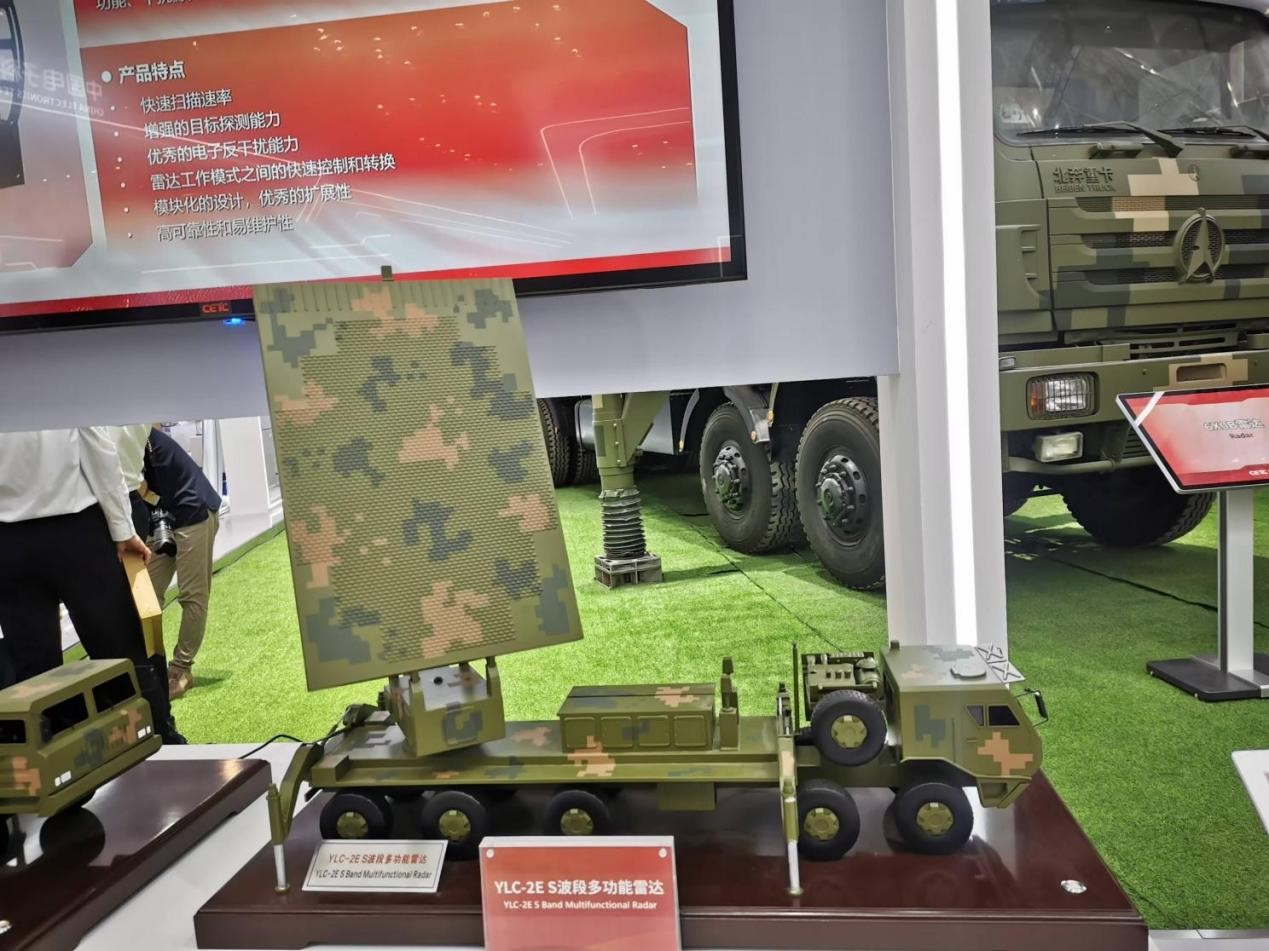The 15th China International Aviation and Aerospace Exhibition (Zhuhai Airshow) will be held in Zhuhai, Guangdong Province from November 12 to 17, 2024. This year's air show attracted 1,022 exhibitors from 47 countries and regions, of which the number of overseas exhibitors increased from 78 in the previous session to about 159, an increase of 104%, with a total exhibition area of more than 800,000 square meters.
At the Zhuhai Air Show, a world-class aerospace exhibition, the innovation and application of semiconductor technology are remarkable. With the increasing requirements of aerospace equipment for intelligence, efficiency and low energy consumption, the wide application of semiconductor technology is gradually becoming the highlight of the air show, highlighting China's latest achievements in the field of high-end semiconductors, and also showing the new trend of the aerospace industry in the future. China Overseas Semiconductor Network has compiled several highlight semiconductor technologies to provide you with some directional references.
1. Metamaterials Technology: The Innovation Revolution Drives Leaps in Electromagnetic Performance
Kuang-Chi Technology showcased its latest structural products based on the fourth generation of metamaterial technology at the air show. Metamaterial technology is not a traditional material, but an artificial material based on a new microstructure, which can achieve far superior performance to conventional materials. The metamaterial structural parts displayed by Kuang-Chi Technology not only achieve lightweight design, but also enhance electromagnetic performance and structural strength, and significantly improve the durability and reliability of equipment. The application of metamaterials covers radar, satellite communications, unmanned aerial vehicles and other fields, which is an important foundation to support the optimization of future aerospace equipment.

Figure: Kuang-Chi Technology's metamaterial technology products on display
Innovations in metamaterial technology have led to breakthroughs in electromagnetic properties that can give spacecraft and ground-based equipment an edge in electronic countermeasures. Compared to traditional materials, metamaterials can achieve the same or even greater functionality at a lower weight. In the future, as more intelligent and lightweight devices are applied to aerospace equipment, metamaterial technology will continue to expand its application space, especially in high-end equipment such as advanced warplanes, missile systems, and space probes. Such metamaterials developed by companies such as Kuang-Chi Technology have also laid the foundation for Chinese spacecraft to further enhance their competitiveness in the international market.
2. Anti-stealth radar: a breakthrough in next-generation semiconductor technology
Radar technology has become another area of interest at the Zhuhai Air Show, and the YLC-2E S-band long-range multi-function radar displayed by CETC Group is particularly eye-catching. Different from the previous anti-stealth radar, this radar uses a new generation of semiconductor technology and combines intelligent algorithms to greatly improve the detection ability of stealth targets. The YLC-2E radar no longer only relies on the low frequency band for anti-stealth detection, but is optimized by software algorithms to ensure that the radar can accurately identify and track small stealth targets.

Figure: YLC-2E S-band long-range multifunctional radar
These radars have reached new heights in terms of anti-jamming and detection accuracy, demonstrating the critical role of semiconductor technology in improving the performance of radar systems. The next-generation radar has the ability to operate in multiple bands, which makes it more flexible when detecting stealth targets and can adapt to more complex battlefield environments. At the technical level, this breakthrough represents China's leading position in a new generation of radar equipment. The continuous progress of radar equipment also means that in the future, aerospace equipment will have greater initiative in battlefield situational awareness and electronic countermeasures.
3. Third-generation semiconductor SiC chips: the core components of high-power devices
In the field of third-generation semiconductor materials, Chinese companies are accelerating industrialization, especially in SiC (silicon carbide) technology. SiC has higher thermal conductivity and pressure resistance, so it has excellent performance under harsh conditions such as high temperature and high pressure. The third-generation semiconductor SiC chips displayed by the 55th Research Institute of CETC Group have been applied in batches in many fields such as new energy vehicles, charging piles, wind and solar power generation and energy storage.
Up to now, the shipment of SiC chips has exceeded 20 million, and the assembly vehicles have reached 2.4 million. This achievement not only shows China's rapid advancement in the third generation of semiconductor technology, but also means that SiC chips will become the core technology of high-power electronic devices in the future. With the development of electric vehicles and green energy, the demand for SiC chips will continue to increase, and the development of SiC technology also provides strong support for the development of China's green energy field.
In the aerospace field, the demand for high-power electronic devices is more urgent, and the advantages of SiC chips have undoubtedly become the key to the upgrading and performance improvement of aerospace equipment. It is expected that in the future, SiC chips will play a more important role in satellite propulsion systems and aerospace power supply equipment, providing more efficient solutions for new aerospace equipment.
4. Semiconductors and AI: The key role of intelligent algorithmic software
The YLC-2E radar system is equipped with intelligent algorithm software, which demonstrates the great potential of combining semiconductor technology with artificial intelligence (AI). AI technology can analyze radar detection data in real time through intelligent scheduling and optimization algorithms, and automatically process target recognition and tracking, thereby improving the detection accuracy and efficiency of radar. The integration of semiconductor technology and AI algorithms enables radar equipment to more accurately identify small stealth targets and improve anti-jamming capabilities.
In the future, AI will play a key role in the core systems of more spacecraft and warplanes. The combination of AI and semiconductors can not only optimize target recognition, but also automate fault detection and maintenance, thereby improving system reliability and reducing manual intervention. Intelligent aerospace equipment is expected to further liberate human resources and relieve the pressure on pilots and ground controllers. The wide application of these intelligent systems will significantly improve the efficiency and safety of modern aerospace equipment.
5. The application of AI in semiconductor design and manufacturing
The application of AI in semiconductor design has profoundly changed the development landscape of the industry. Through machine learning, deep learning and other technologies, AI can predict problems in the design and automatically optimize the chip design, greatly improving the design efficiency. The introduction of AI not only reduces design and production time, but also reduces energy consumption and costs, making products more competitive.
In the manufacturing process, AI ensures the reliability of semiconductor products through high-precision quality control. AI's self-learning ability also enables chips to be gradually optimized in real-world applications. For example, in aerospace and defense equipment, high-reliability chips are crucial, and the blessing of AI ensures the performance of each chip in the application. It is expected that in the future, AI will become an indispensable part of the semiconductor production line, injecting strong impetus into the further development of the semiconductor industry.
6. The strategic significance of semiconductor technology
The technology display at the Zhuhai Air Show further highlighted the important position of semiconductor technology in modern aerospace equipment. Whether it is metamaterials to improve electromagnetic performance, a new generation of anti-stealth radar, and the third generation of semiconductor SiC chips used in new energy vehicles, these technological advances show China's competitiveness in the global high-end technology field.
Semiconductor technology is not only the core of supporting modern aerospace equipment, but also the key to China's dominance in the global scientific and technological competition. At present, China is increasing its investment in the semiconductor industry, striving to improve the integrity and autonomy of the industrial chain through independent research and development and technological innovation. In the future, with the increase in global demand for high-end semiconductors, China's strength in this field will become stronger and stronger, which will have a far-reaching impact on the global semiconductor market pattern.
7. Conclusion: The technical backbone of future space equipment
The semiconductor technology demonstration at the 15th Zhuhai Airshow highlighted the potential of this field for application in modern aerospace equipment. From metamaterial technology to third-generation semiconductor SiC chips, from intelligent algorithm software to the application of AI in chip design, these technological advancements have pushed the aerospace industry towards a more efficient, smarter, and more reliable direction. China Exportsemi believes that semiconductor technology will continue to play a key role in the future, providing solid technical support for aerospace equipment in China and even the world. Through continuous innovation and technology accumulation, China's technological strength in the aerospace field will continue to increase, contributing to the further development of the global aerospace industry.
The Zhuhai Airshow provides an important platform for China to showcase its latest technological achievements, which not only reflect the growth of China's semiconductor industry, but also mark China's expanding capabilities in the field of high-end technology.






